I came across an episode from Rowan Atkinson (Mr. Bean) explaining how comedy works. The only interesting one is on visual comedy: https://en.wikipedia.org/wiki/Funny_Business_(TV_series)
People might think that visual humor belongs to the distant past or to the eerie black and white world of silent films.
Nowadays you might think comedians simply talk. But visual humor is actually everywhere these days.
Look at all these TV commercials that try to seize your attention with visual jokes.
Study the popular comedies on television or in the cinema and you would be amazed how often the big laughs depend on physical rather than verbal humor.
I will begin by talking about the methods and techniques of the physical comedian.
This is Kevin Bartholomew.
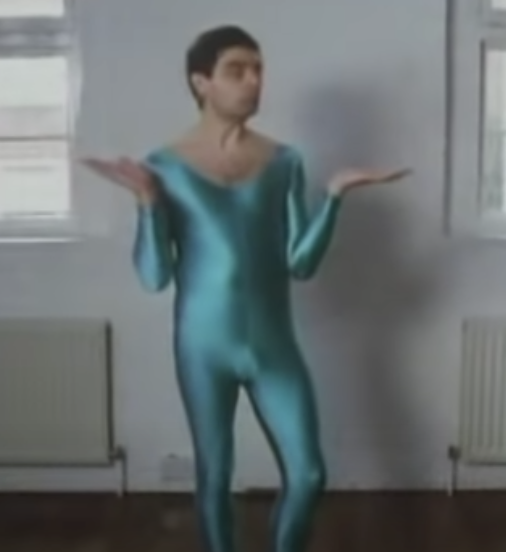
A young actor with a comprehensive knowledge of physical comedy his one-man show “Haha Kevin” has enchanted thousands of school children since 1976. He’s invited our cameras to his studio home where with the occasional assistance of Mr. Driscoll and Miss Montague, he will demonstrate many of the arts of his profession. For kevin, as for any physical comedian, the body is the essential means of expression.
His body is his tool. The comedian may be lucky enough to possess the kind of body that people laugh at.
A short fat one
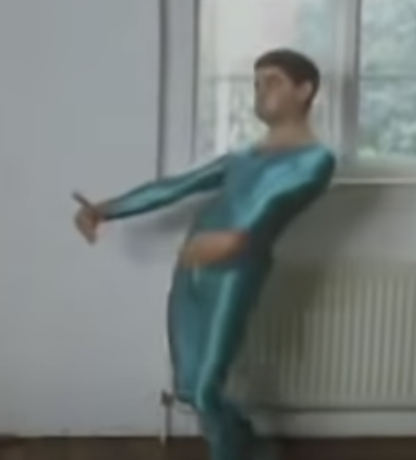
Or a tall thin one
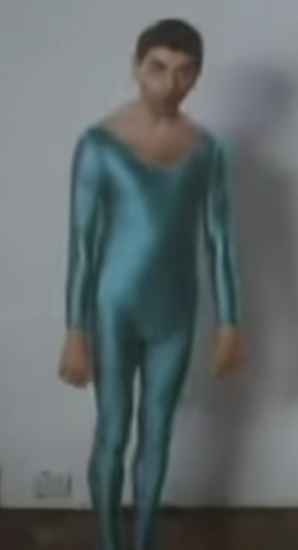
but a normal attractive body is not necessarily a handicap.
It is what you can do with your body that is important.
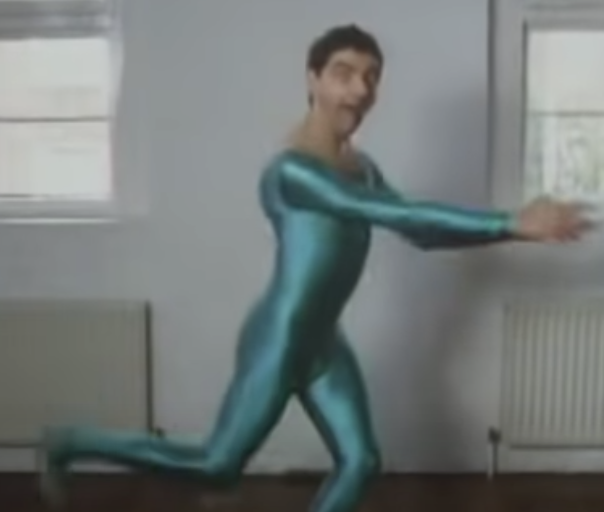
There is comedy potential in every part of the physique.
The feet, the hands, the ears, the knees, to the bottom, and the face.
It is possible to make comedy from the whole range of human emotions:
Horror
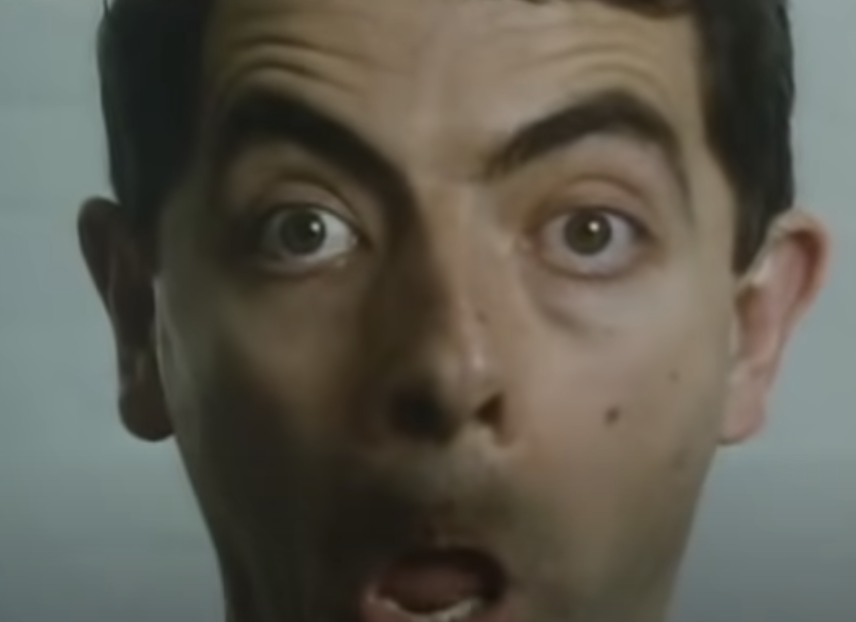
Pain
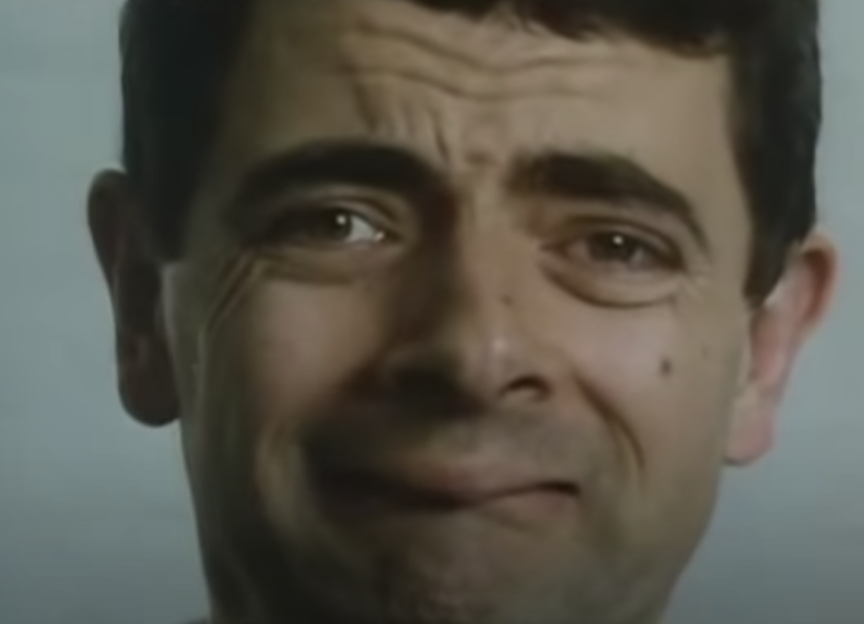
Sorrow

Bewilderment
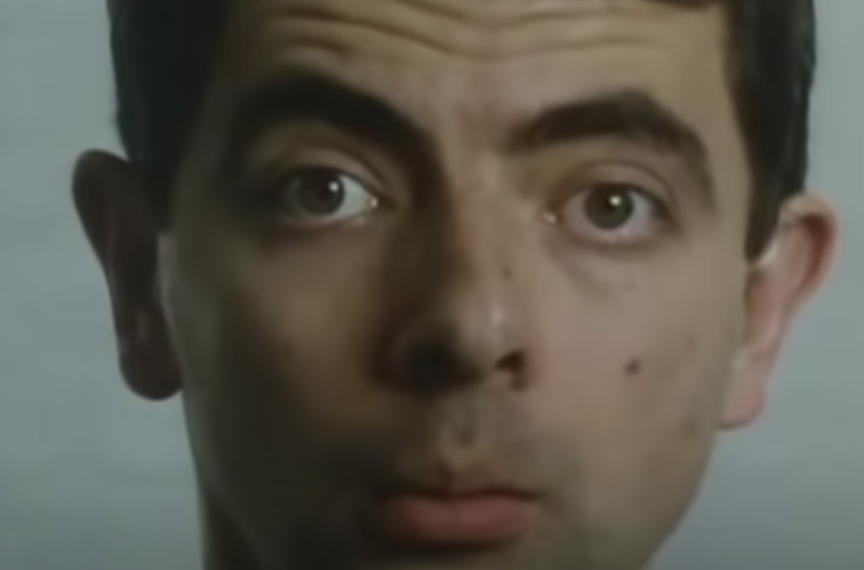
Hope
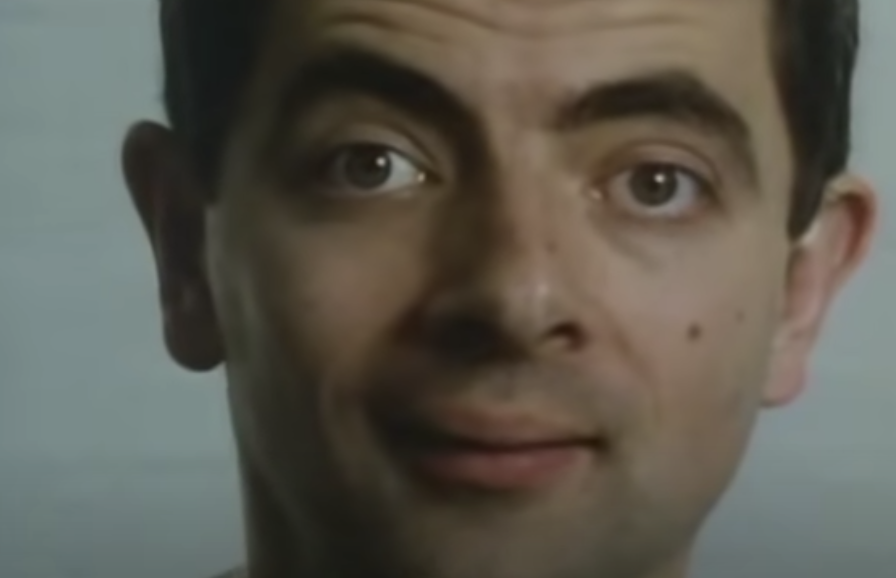
Joy
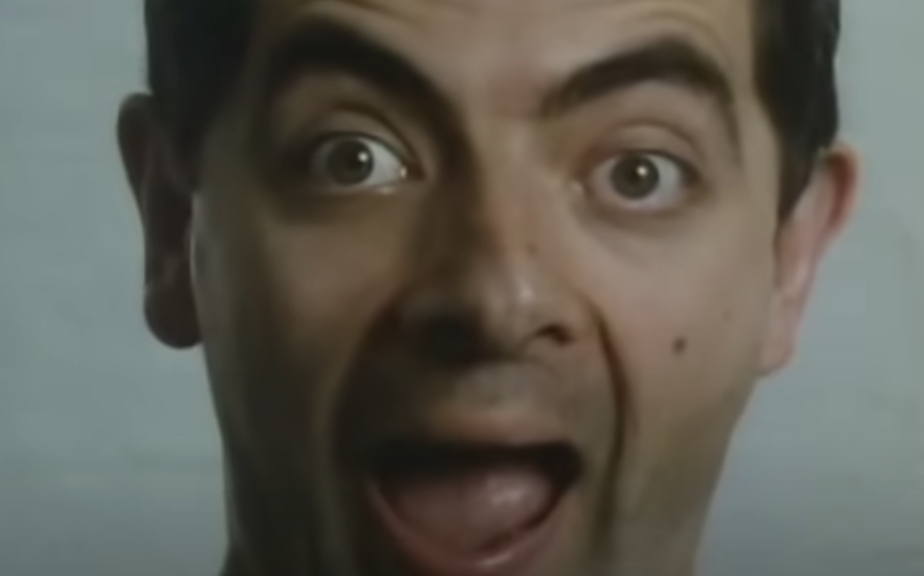
Smugness
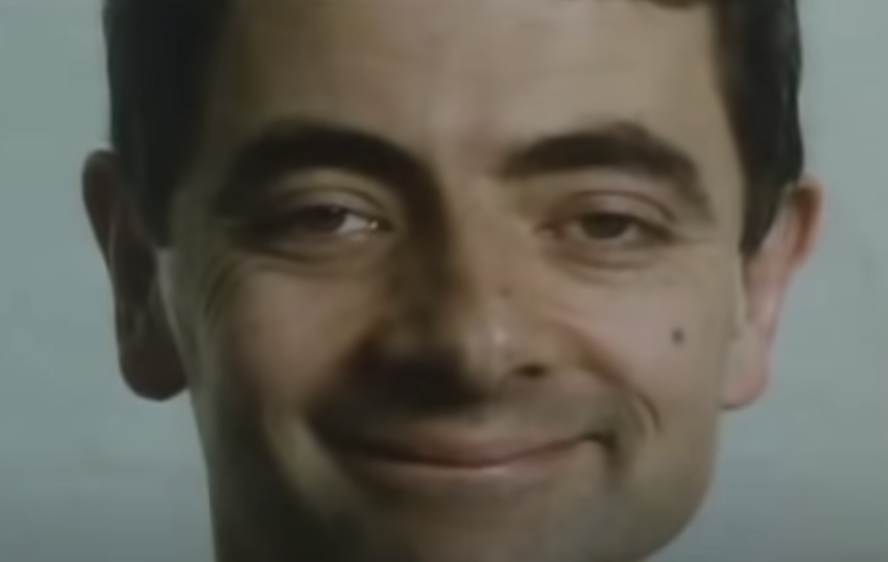
Even when the comedian appears to be wearing normal clothes, it is rare that they will fit perfectly.
They are likely to be slightly too small or slightly too big.
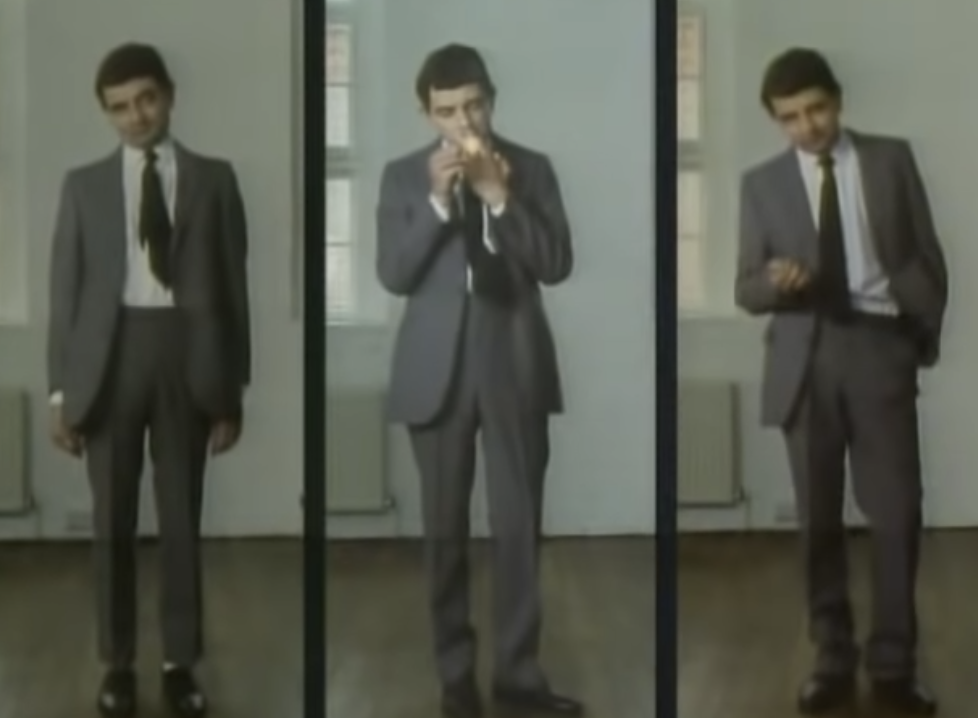
Psychologically, these small variations can be very significant for the performer and the audience. The character in the big clothes is likely to be a completely different person from the character in the small clothes.
In the world of high fashion, half an inch on the collar and cuffs can make all the difference as to whether a costume works or not.
Of course, it is not enough just to look funny. The visual comedian is under a certain obligation to do funny things. So what is funny?
Kevin will now demonstrate three basic principles of visual comedy using only the banana.
Principle number one: an object can become funny by behaving in an unexpected way
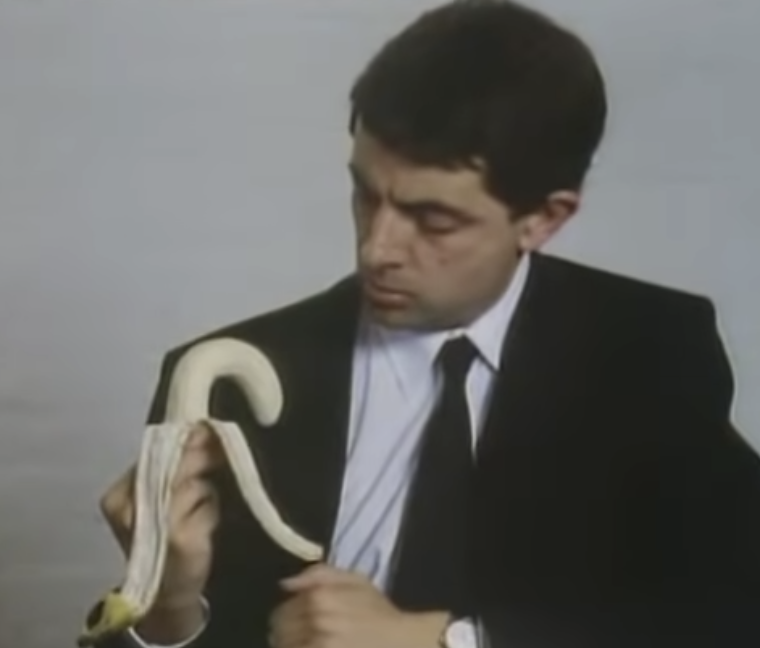
Principle number two: an object can become funny by being in an unexpected place
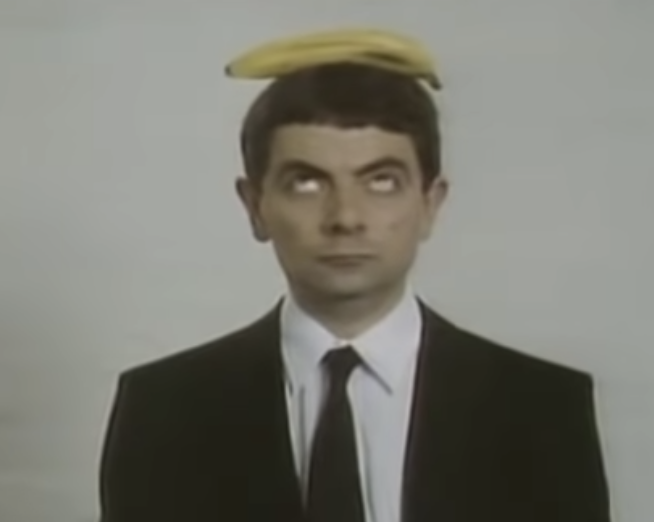
Principle number three: an object can become funny by being the wrong size
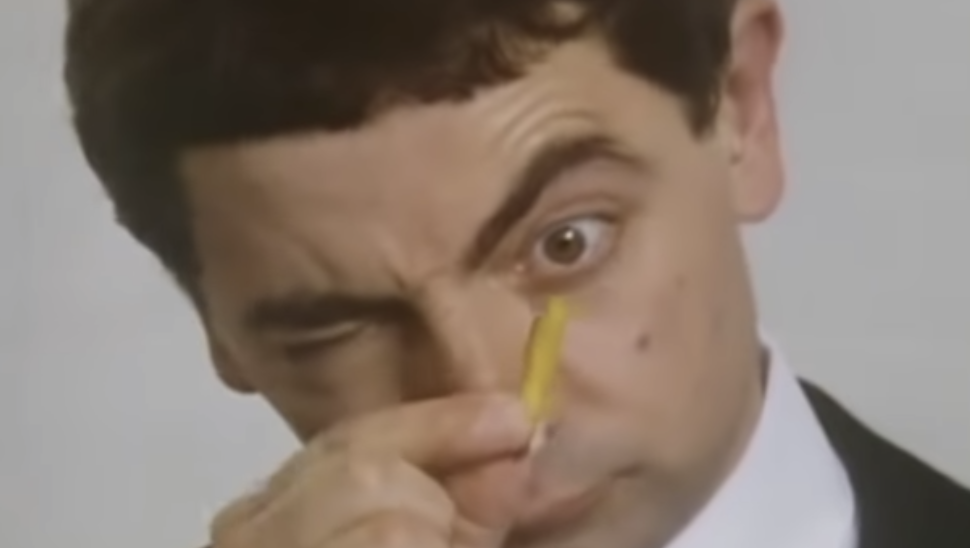
What applies to the banana can also apply to kevin himself.
Take principle number one. Kevin is an adult human being. So he can immediately become funny, by behaving like something else.
Like an object for instance

Or like an animal. While an animal can become funny by behaving like a human

Principle number two. Kevin can become funny by turning up in an unexpected place

And Principle number three, Kevin can become funny by being the wrong size.

If Kevin behaves like a dog, eating a tiny banana in a cupboard

then all three principles are operating at the same time. Of course, this is not necessarily three times as funny.
It is in animation that we can see our three principles taken to their furthest extremes.
The animator makes things behave in the most surprising ways.
He makes things turn up in the strangest places.
And he gives things the most unlikely proportions.
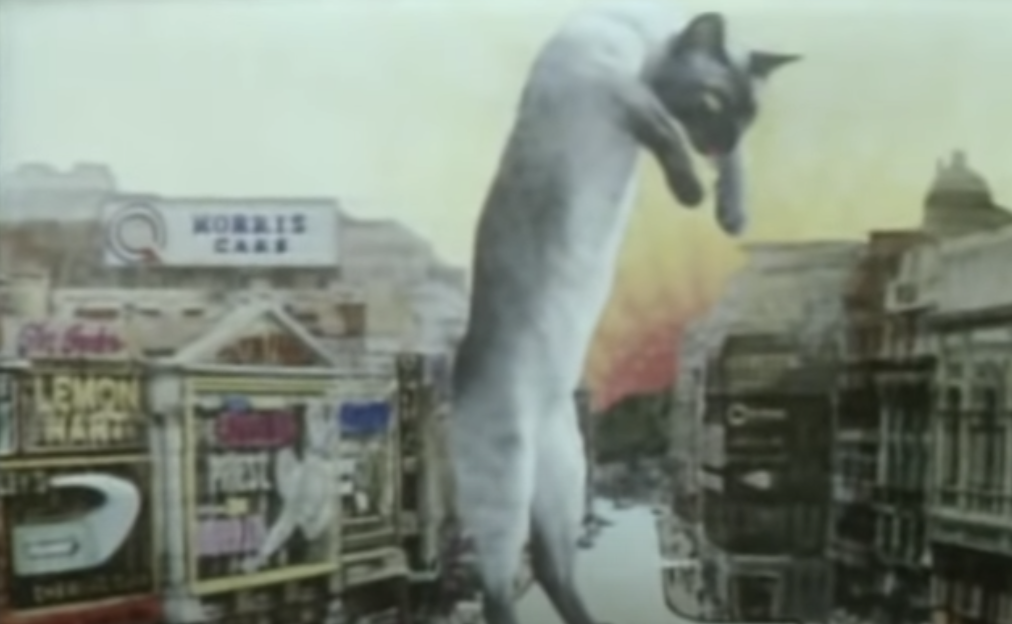
So you see, the world of visual comedy is one where doves lurk in our underpants. Where cats are 50 feet high and buses can turn somersaults. The jokes depend on sudden shocks and strange transformations that undermine the normal laws of our existence.
Now let’s have a look at some of the methods that are used to make these jokes happen.
Slapstick is the most ancient and enduring tradition of physical comedy. We seem to take a constant delight in seeing people hurt and humiliated by accidents and acts of violence.
The earliest American comedy films consist almost entirely of violent action.
Max senate was the first great genius of screen comedy and the inventor of the Keystone Cops. He was a complete anarchist who delighted audiences around the world with films full of people fighting, people chasing each other, and people destroying things. These weren’t just comedies, they were The Terminator and Robocop of their day.
The slapstick we tend to find funniest now is that from real life.
The comedian finds it difficult to compete with reality.
Because the more real it is, the funnier it is.
The more dignified the victim, the funnier it is.
To get a laugh out of some act of slapstick violence these days, the comedian must strive for believability.
Since Kevin seems to have difficulty achieving believability, perhaps he needs the help of vegetables.
Nowadays, you have all the resources of the soundtrack to add conviction to your violence. The secret is to find the vegetable which gives you the most authentic effect.
The comedian must achieve the shock of violence without the reality of pain.
The simplest way to transform pain into comedy is by the use of overstatement.
The overstatement may lie in the comedian’s reaction to being hit.
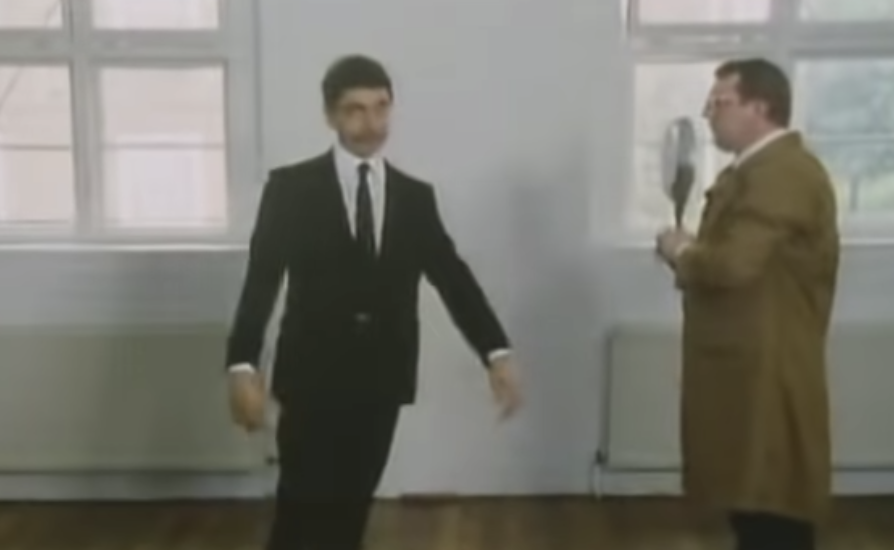
The alternative to overstatement is understatement.
The physical comedian seems fated to be the victim of his own comedy and not only does he suffer from violence, he is also constantly at the mercy of magic.
Many of the tricks which the comedian uses to amuse us are similar to those which the magician uses to astonish us.
For instance, a lot of visual jokes are based on people suddenly appearing or disappearing. The sudden appearance and the sudden disappearance are important elements in slapstick.
If someone falls over, it is funnier if they disappear at the same time.
The farce of people running in and out of doors is comic because it provides a rapid sequence of appearances and disappearances.
The faster a character shoots in and out of vision, the more effective it is likely to be.
Apart from appearances and disappearances, the main business of the magician is to achieve transformations. Turning one thing into something else
A magical transformation becomes comic when it is absurd as well as astonishing.
The first person to make surreal jokes using film magic was Georges Melies working in France at the turn of the century. His films are full of sudden appearances, disappearances, and transformations achieved through simple camera tricks.
Of course when the comedy depends on tricks like these it has more to do with the mind behind the camera than the performer in front of it. He has to resign himself to becoming a victim of the effects
The most commonly used camera trick is that of speeding up the action this makes any kind of movement look mechanical and therefore comic. It was a device much used by Melies and it has never gone out of fashion.
It has often been said that all comedy is rooted in fear. The things we laugh at are closely related to the things which frighten us. The world of spooks and hauntings for instance, is very popular among comedians because haunted places are full of all those elements which make comedy happen like sudden appearances.
The special effects nowadays tend to be more sophisticated than a simple sheet over the head but the haunted house tradition lives on. In films like Ghostbusters, there’s a sudden appearance joke. Although the effects are more elaborate in an expensive film like this, the principles of comedy are just the same.
There’s an object come to life, which is also a joke about proportion.
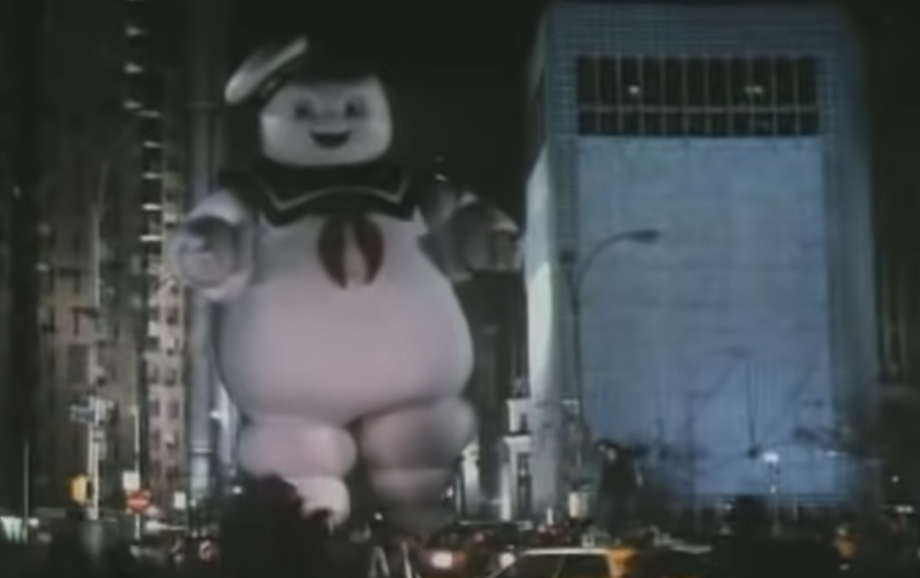
One of the joys of visual comedy is the sheer pleasure of being liberated from boring old everyday reality into a bizarre dream world where anything is possible. Comedy is a license to fish out the strangest images from the depths of our unconscious.
Now you may be starting to see how the different methods of visual comedy all tend to strip people of their normal human dignity.
You can achieve this by hitting someone over the head with a fish or by transforming them into a toilet.
But you can also do it simply by imitating them.
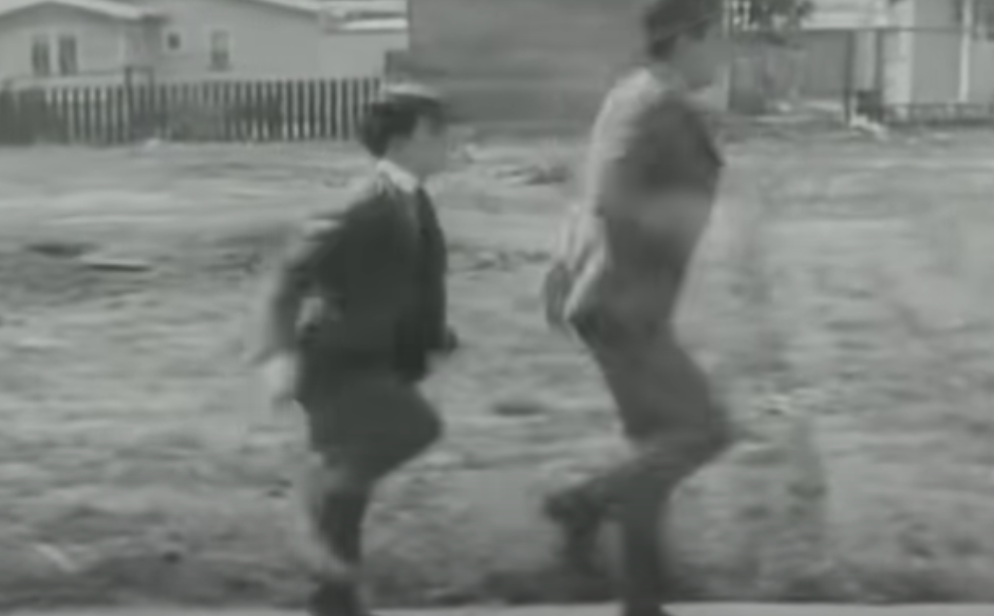
One person imitating another is funny. The sheer impudence of it is funny. If the imitation is exaggerated, it becomes parody. This is imitation which implies some ridicule of the person being imitated.
If the person being parodied is a representative of power and authority then the parody becomes satire. In satire, visual comedy is used as a weapon.
An endless amount of modern comedy is based on parodies of well-known films and tv programs. This immediately gives the comedian a form and structure within which he can work.
The handy thing about parody to be frank is that you don’t have to think up too many original ideas and you can still get three different kinds of comedy happening at once.
1. There’s the fact that you’ve got the comedian imitating the mannerisms of a well-known character.
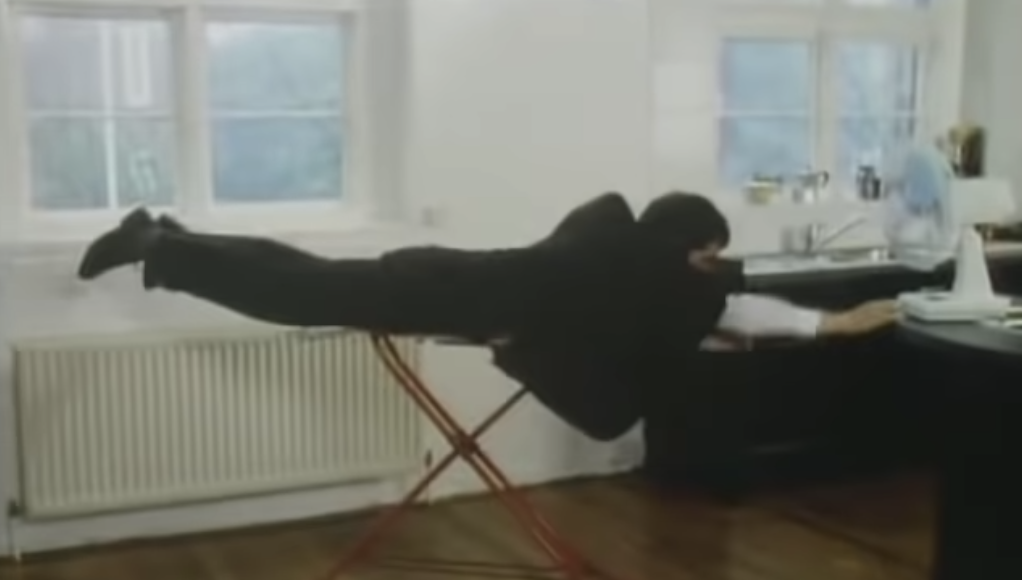
2. There are jokes about the mechanics of the parody itself.
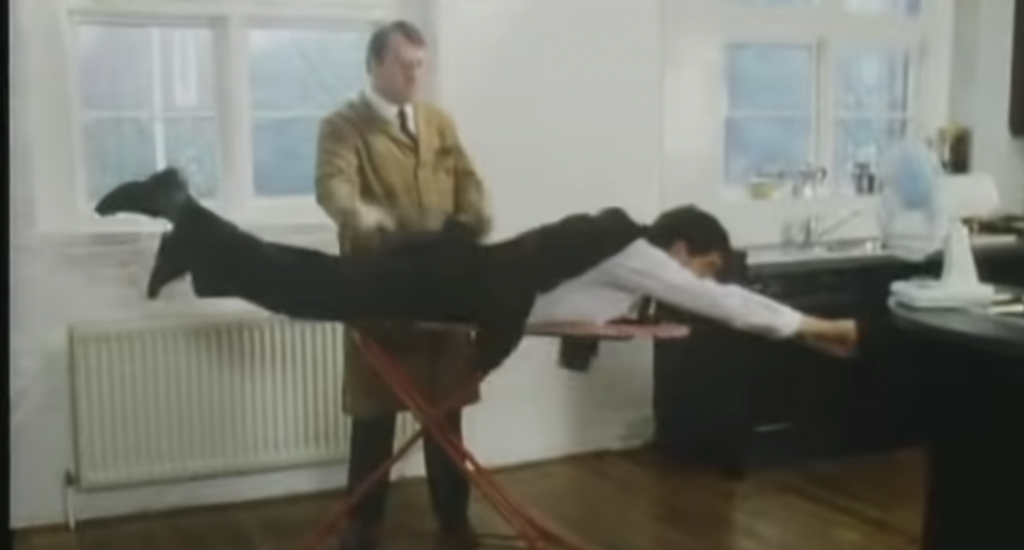
3. And there is the opportunity to send up the visual style of the original
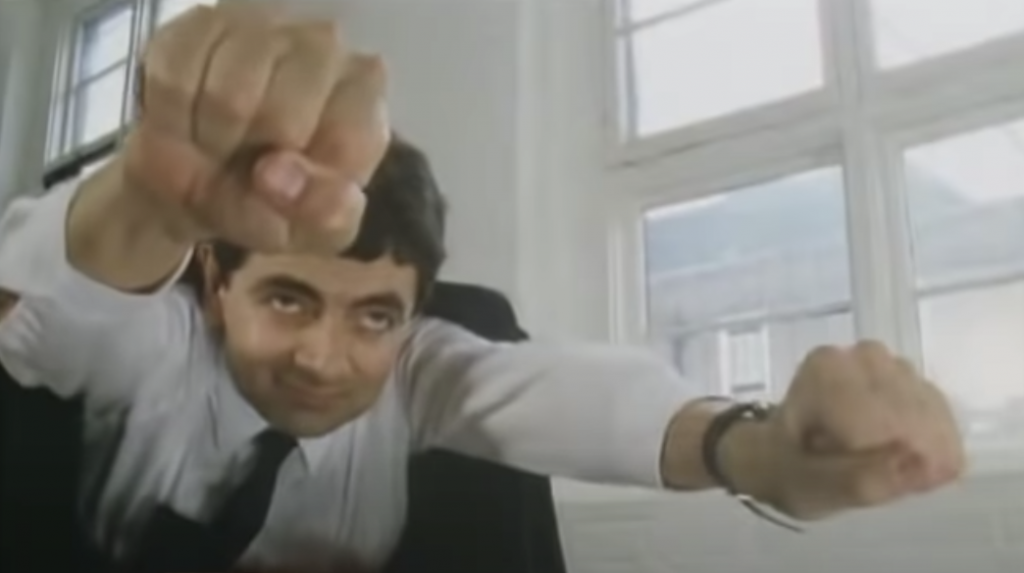
If the production values don’t quite match those of the original, well you can say that’s all part of the joke.
Whether he’s working in slapstic, surrealism, parody, or some combination of the three – the comedian’s success depends first and foremost on his ability to create a funny character.
As Charlie Chaplin once said, “In comedy, nothing transcends character.”
For the physical comedian, this means his ability to communicate through his body language.
Mime is very much Kevin’s speciality and his famous piano act is one of the highlights of his stage show.
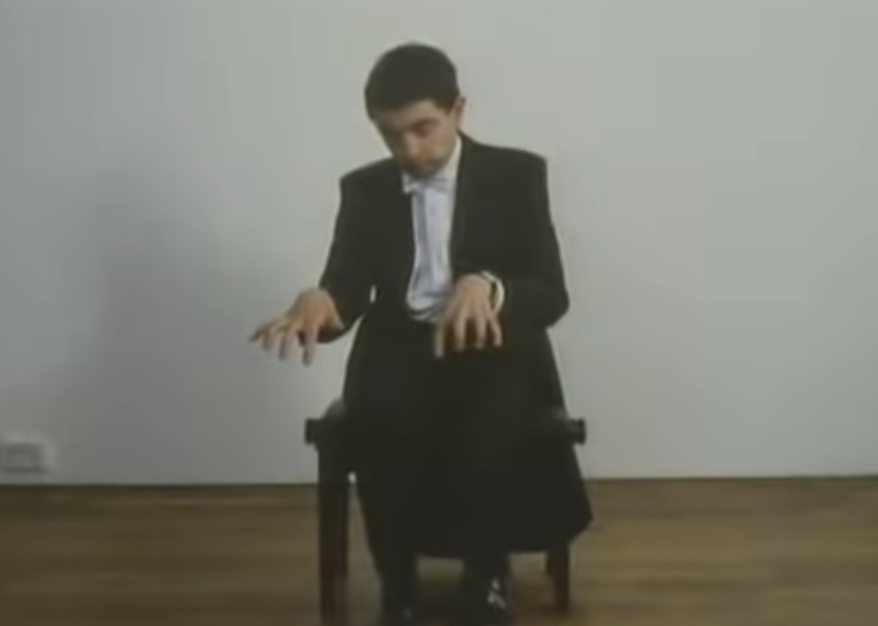
Part of the pleasure is to do with illusion making us see what is not there. But it is mainly about using the body to create character. Comic acting, in other words.
Through his body language the comedian can introduce intimacy and even elegance into the generally frantic world of physical humor, the comedy may lie simply in the shadings of a facial expression. Particularly now in the age of TV where the close-up is so common.
This is the comedy of personality rather than the comedy of gags. It’s not about doing funny things, It’s about doing something quite normal in a funny way. The skill lies in the accuracy of human observation and the precision of the execution.
Jacques Tati carried on the silent comedy tradition into the sound by making films virtually without dialogue. He was not only a creator of jokes but an observer of life who saw humor in the smallest details of human behavior. He was a specialist in the comedy of character expressed through body language.
In visual comedy, we see the same ideas crop up again and again. The wit of the comedian often lies in simply inventing new variations of old jokes. He can do this because the success of any comic idea depends not just on the skill with which it is executed, but more importantly on the attitude with which it is performed.
New attitude, new joke.
In the first comedy ever put on to film, a boy stands on the gardener’s hose. He lifts his foot and the gardener gets a face full of water. It’s the humiliating surprise. The basic practical joke.
It doesn’t come over too funny now to be frank because it is crude, predictable, and essentially characterless.
However, if Kevin approaches the same situation of man and hosepipe with different kinds of comic attitude – we should see how it can be brought to life in different ways by introducing character into the comedy
Number one – The Dim Attitude
The comedy of stupidity. The crucial element in the character of the comedian is his lack of awareness. He knows less than the audience about what is going on.
The dim comedian confronts the world with a kind of bewildered innocence.
Number two – The Aggressive Attitude
The crucial element in the character is his lack of consideration for others.
Number three – The Crude Attitude
The comedy of vulgarity. The crude comedian thrives on the comedy of social embarrassment.
So which comic attitude is funniest?
Probably the one you find funniest is the one with which you identify most. Only if you identify with a comic attitude, can you laugh.
Take Chaplin for instance. The whole world found him funny in his day but hardly anybody laughs at him now.
Why? He is certainly far more skilled and inventive than a lot of modern comedians whom we do laugh at. He does everything it is possible to do in visual comedy, including all the things we’ve talked about so far.
He wears comic clothes. He has a comic walk. He is an expert in using his body. He is constantly transforming himself. Turning himself into a woman. Or an animal or an object. His films are full of slapstick and acrobatic stunts. There is relentless sadism, understated violence, and overstated violence. There are surprising appearances and disappearances. There is surrealism and there is imitation. Here’s an expert mime and a sharp observer of human behavior. Chaplin was also a perfectionist in the execution of his comedy doing hundreds of takes to get things right.
And yet, however much we admire him, it is hard for most of us these days to actually laugh at his films. There is often a considerable gulf between what can be described as comic and what we personally find funny. The problem with Chaplin is that it is hard for us to get involved in what he does. He is distanced from us by time and by the silence of his films. But the main difficulty, I think is that we just can’t identify with his attitude anymore. He seems too cute or too pleased with himself.
Although the best physical comedians always have a strong character and attitude of their own, they also have a surprising amount in common. There are certain qualities of character which crop up again and again because these are the qualities that make visual comedy happen.
The first thing to say here is that the physical comedian is an alien. He comes from the other side of the looking glass. He is like us, but different.
Whereas the verbal comedian is often smarter sharper and faster than those around him, the physical comedian usually has a quality of innocence of having been born yesterday.
Harry Langdon is one of the weirdest of the lot. Someone once said that he looks like a “baby dope fiend.” He is an adult with the emotional and intellectual equipment of an infant.
The comedian’s childishness emerges first of all in his difficulties with objects. He is constantly doing battle with them in a way which invests them with a life and soul of their own.
But there is just as much potential in very simple domestic objects.
In his battles with objects, the comedian is bound to be inept. In order for funny things to happen, he must constantly make mistakes and he must constantly be susceptible to accidents.
Although he is clumsy and inept, the physical comedian is very tenacious.
He keeps on doing things long after the point where the normal person would have given up.
If we take Kevin into a fashionable restaurant, the one thing he won’t do is sit there and behave himself. In order to amuse, he needs to be uncivilized. He either doesn’t understand social conventions or he is incapable of following them.
The physical comedian not only disregards convention, he’s got little regard for morality or legality. He has none of that consideration for others which inhibits the rest of us from behaving like comedians all the time.
Now let’s see what happens if we swap it around so that Kevin becomes the waiter and Mr. Driscoll becomes the customer. Since waiters are supposed to be polite hardworking and competent, the comedian can’t go far wrong if he is rude, lazy, and useless. If he were to conform to social expectations, he wouldn’t be funny anymore.
One way or another the physical comedian has got to be a threat to decent and respectable people. He may be aggressive or he may be affectionate but the comedian is always causing offense and spreading confusion. He makes a mockery of all authority, politeness, and pretension.
Drunkenness, like childishness – immediately supplies the comedian with the stupidity incompetence and irresponsibility that he needs in order to be funny.
The physical comedian is certainly no match for the verbal kind when it comes to flashes of searing insight. Visual comedy is a more blunt instrument, but this means that everyone can understand it. Most of the time you only have to be human to get the joke.
Since he is such a maladjusted outsider, the physical comedian finds it hard to form normal human relationships. With women, he is bound to get it all wrong.
Let’s have a look at three different approaches from the comedian’s manual of sexual relationships.
The first one we’ll call – The Romantic Approach
His emotional age zooms up from childhood to early adolescence. This leads us straight into the comedy of embarrassment. As all his efforts to appear impressive are bound to come to grief.
A second possibility is – The Direct Approach
The comedian simply ignores all codes of proper behavior and acts immediately on his desires.
The third possibility we might call – The Startled Virgin
This one depends first of all on the comedy of role reversal with the woman as the sexual aggressor.
While the comedian is impossibly innocent, he remains a bewildered child masquerading as an adult.
The physical comedian is really the ultimate outlaw as we’ve seen he breaks all the rules of decorum and convention. He does all the things we can’t couldn’t and shouldn’t do in real life.
You can’t break the rules without getting into trouble and consequently the physical comedian is suffering most of the time. He is an eternal victim subject to constant hostility from all quarters.
Well that’s about it, I think we’re finished with Kevin now so I’d just like to make one final point.
The point being that the physical comedian is indestructible. Whatever the odds against him, the comedian always survives to walk away at the end of the story.
However, whatever you say about comedy – the opposite is also true.
So if you like you can ignore everything I’ve said.
